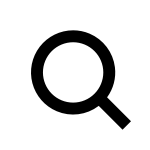Ivo Michiels

Ivo Michiels is the pseudonym of Henri Paul René Cuppens, born in 1923. He was not only an author, but also an art critic, a screenwriter, teacher and editor of well-known newspapers and magazines. In the early part of his career, he uses a traditional style of writing, but this changes from the mid-1950s, when he switches to experimental prose. Since 1963, he is widely known for his book ‘Het Boek Alfa’, and from then on, he is honoured as the father of experimental prose. His way of writing, his ideas, his books, are partly shaped by the tumultuous period he experienced during World War II. Christiane Faes, whom he married in 1965, is an inspiration to him; she is not only an author herself, but to him she is also his muse. From 1979 until his death in 2012 they lived in Le Barroux, a municipality in the south of France.
Ivo Michiels met Jef Verheyen in September 1955 and short after Verheyen introduced him to the French and Italian art scene of their time. They don’t only have a very close and intense friendship, but they also benefit from each other professionally. Their correspondence involves extensive letters, covering both business and personal things. It talks about travelling, private life, work, and frustrations, but most of all it shows how unconditionally the two supported each other.
